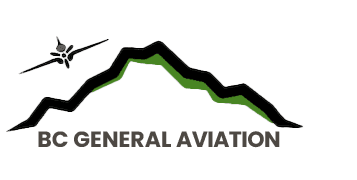Introduction
1. Reach the destination.
2. Divert to an alternate airport.
3. Increase the chances of being found should an en-route accident occur.
There are currently several open files of missing aircraft in British Columbia. This article serves to provide some basic information on the routes that they were flying and also gives some tips and information on how to increase your chances of being found.
On September 22, 2018 we had the opportunity to sit down with BCGA Member and CASARA Deputy BC Director Fred Carey to discuss some of the work that CASARA does and he shared some valuable information and tips that pilots flying in British Columbia should know.
Missing Aircraft
Date | Type | Origin | Intended Destination | Last Known Position | Status |
Sep 14, 2018 | RV6 | Edmonton | Chilliwack | 5nm NE of Blue River | Missing |
Jun 08, 2017 | PA28 | Cranbrook | Kamloops | Cranbrook | Missing |
Oct 23, 2007 | C172 | Revelstoke | Qualicum via: CZAM | 50.283N 121.25W | Missing |
Importance of a Flight Plan
If the pilots indicate, on the flight plan that they will follow the published Mountain VFR Route then the search will be focused on the published VFR Route.
The searchers will consider the possibility that the pilot deviated from the filed routing however, deviating from the intended routing significantly reduces the chances of being found.
When it comes to flight planning:
- File a Flight Plan.
- Ensure the routing is specific.
- When possible follow the published Mountain VFR Route (Details to follow).
- Notify the FIC or ATC of any changes to the filed routing.
- File an updated and detailed position report with the FIC or ATC every 30mins to update your last known position.
- If you reverse course or divert for any reason notify the FIC or ATC immediately.
- Close your flight plan as soon as possible after landing.
Advantages of Flying the Published Mountain VFR Route
Advantages of published VFR routes:
- Often follow highways or roads that make emergency landings possible.
- Often link small towns.
- Often follow the lowest and widest valleys.
- Often provides an escape route or room to turn around.
- Offers a predictable path for searchers to follow.
- Higher likelihood of other aircraft flying the same route.
- Cellphone reception in remote areas favours towns, major highways and roads.
- Often associated with better radar coverage.
A Word on Cellphones
Fred shared that there are cellular towers scattered all over the province in order to optimize cellular coverage. Priority cellular coverage is given to municipalities, major highways and roads. It just so happens that the VFR routes give you the best chance of having cellular coverage. Why is this important?
The software in your cellphone is programmed to “check-in” with or search for the nearest cellular tower at certain intervals. For the purpose of this article lets say every 15-30 minutes. When your cell phone checks in with a cellular tower also referred to as a “ping” the approximate location of your phone is recorded and stored for 24-48hours.
This data could prove critical when it comes to a search and rescue effort. In some cases where the cellphone pinged a tower not only can the specific tower be identified but the quadrant from that tower can be identified which assists in narrowing a search area.
Leaving your cell phone on isn’t a magical solution but it is one more tool that could help you be found. When asked about the practice of turning the phone off to save battery, Fred advised to leave it on when possible as LTE signals are entirely digital and use very little battery. If necessary carry a battery pack and keep your phone charged, turned on and with cellular mode enabled.
That said, a fully charged cell phone is still not a replacement for an ELT or GPS tracker.
Help Them Find You
- File an accurate flight plan and keep it updated.
- Follow the VFR route when possible.
- Ensure your ELT is in good working order. (406Mhz will reduce the search time).
- Use a GPS Tracker with the most frequent tracking interval that you can afford.
- Keep your cell phone turned on and out of airplane mode.
- Carry a survival kit that you are familiar with and practice signalling techniques.
If you are able to utilize all six items on this list you will greatly increase that chances that you are found.
Searching For Missing Aircraft (IMPORTANT!!)
General Aviation pilots are asked to keep an eye out for any evidence of missing aircraft while out flying. If any evidence of a missing aircraft is seen they should call the local RCMP or notify the FIC.
CASARA and the BCGA ask that pilots refrain from conducting searches and limit their efforts to keeping a vigilant eye out during flights that happen to be over the routes taken by the missing aircraft.
Missing Aircraft
Vans RV6
Edmonton – Chilliwack
Last Known Position: 5nm NE of Blue River
Piper PA28
Cranbrook – Kamloops
Last Known Position: Cranbrook Airport








